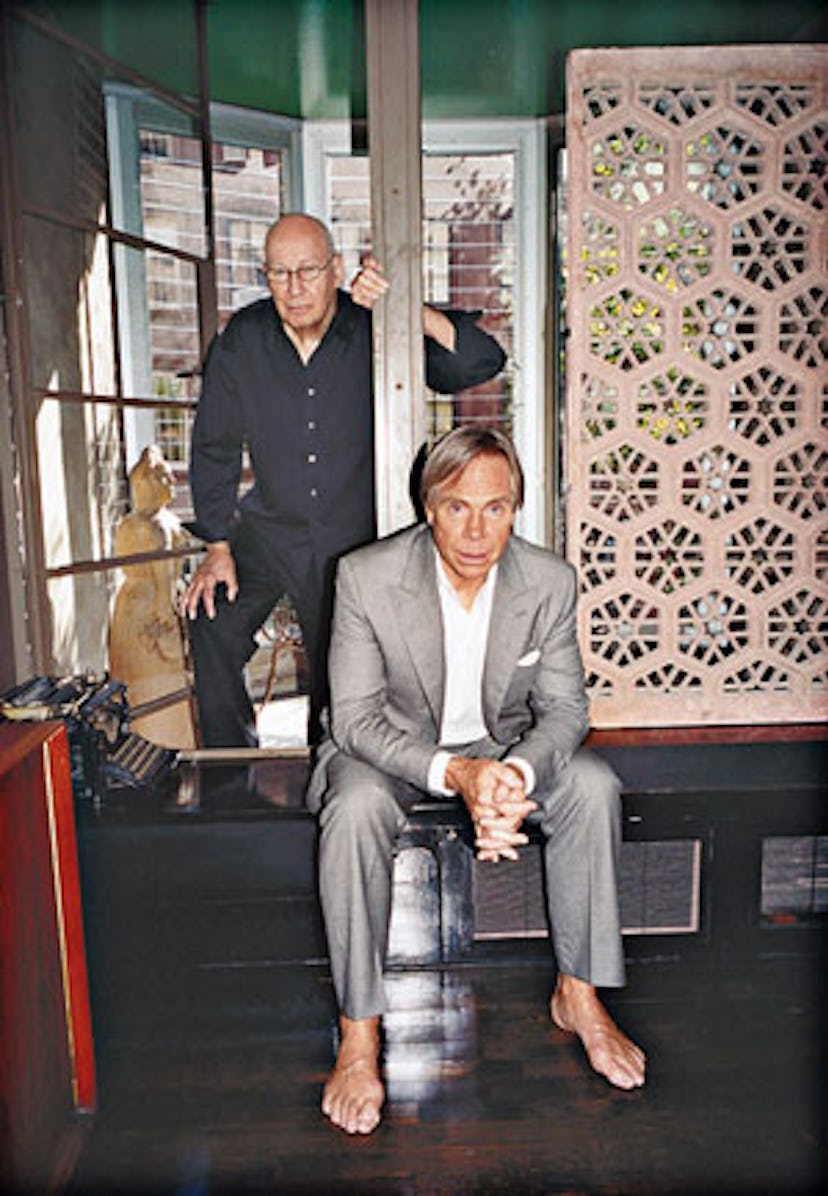Since going into business in 1985, Tommy Hilfiger has sold a vision that’s as wholesome as apple pie. Now, in a new book called Iconic America, out in November from Rizzoli, he celebrates the images that have influenced him over the past two decades. Art-directed by George Lois—the legendary creative director of Esquire during the Sixties—the book is more than two centuries of American history rolled into 335 pages of pictures: Mount Rushmore, a Playboy centerfold, Lucky Strike cigarettes, even the Nascar logo and O.J. Simpson’s alleged gloves.
Here, Hilfiger and Lois speak to W about the state of celebrity, the future of advertising and the difficulty of doing a project like this one while the country is in the middle of an unpopular war.
W: What made you do the book? George Lois: Well, Tommy’s just a connoisseur of Americana. He’s so f—ing American it’s revolting. The first time I met him I thought I was talking to a Norman Rockwell painting. Tommy Hilfiger: I certainly had a Leave It to Beaver childhood: Schwinn bicycles, Converse sneakers, Levi’s, Mickey Mouse. Nothing in our home was made outside the U.S. W: The way you guys juxtapose images like the CBS logo and Edward Hopper paintings is almost Warhol-esque. Is the defining characteristic of capitalism that advertising gets elevated to the level of art? GL: Sure. That’s what the book’s all about. But it’s not just a jingoistic book. We also put in the shameful icon of slave chains and the genocide of the Indians. W: Was it hard to do a project like this when so much of what America currently stands for is under attack? GL: Actually, I don’t think we ever would’ve done the book if we weren’t in Iraq and didn’t have this terrible government that’s making us hated. TH: We wanted to say, “Hey, we are a great country.” And doing the book made me love the imagery even more. The MTV logo, the Apple logo, Coca-Cola. The list goes on and on and on. You become very proud of what we stand for and also proud of our artists. Think of Warhol’s reputation in the world now. In years past Monet, Picasso and the European artists were looked upon as gods. Now Americans are important as artists in the world. W: Were there images you couldn’t get that you wanted? GL: Levi Strauss jeans. I talked to everyone in the company and they said, ‘No. Tommy is a competitor.’ After 30 phone calls you give up. I had to go directly to [Radio City overlords] the Dolans to get an image of the Rockettes, because everyone below them said no. W: There are very few images of current celebrities. Britney Spears and Paris Hilton aren’t in the book. GL: That was on purpose. TH: They’re fleeting. Muhammad Ali, Marilyn Monroe and James Dean are forever. With a couple of exceptions, the celebrities now are not. W: Both of you have had tremendous success with advertising and marketing. Do you think advertising still has the ability to surprise people? TH: It’s always possible, but it takes real nerve. Calvin Klein did an amazing job creating controversial advertising in the Seventies and Eighties. People aren’t doing that now. W: Isn’t that also because there are so few taboos left? TH: It’s definitely more difficult to shock today. I almost think the next phase of creative advertising has to come from the way in which the product itself is presented—iTunes is a perfect example. That was advertising and marketing, and it changed the whole music business. It’s a movement. Oprah is another example of a movement. Ralph Lauren has done a great job of creating a movement. W: Isn’t he your most direct competitor? TH: Yes, but I respect him tremendously. He’s a genius. W: The book is called Iconic America. Tommy, do you consider yourself an icon? TH: I think my logo is iconic. Our brand is iconic. I don’t visualize myself as an American icon, but when I’m dead and gone, maybe I could make the list. •
from left: George Lois and Tommy Hilfiger at Lois’s home in New York
